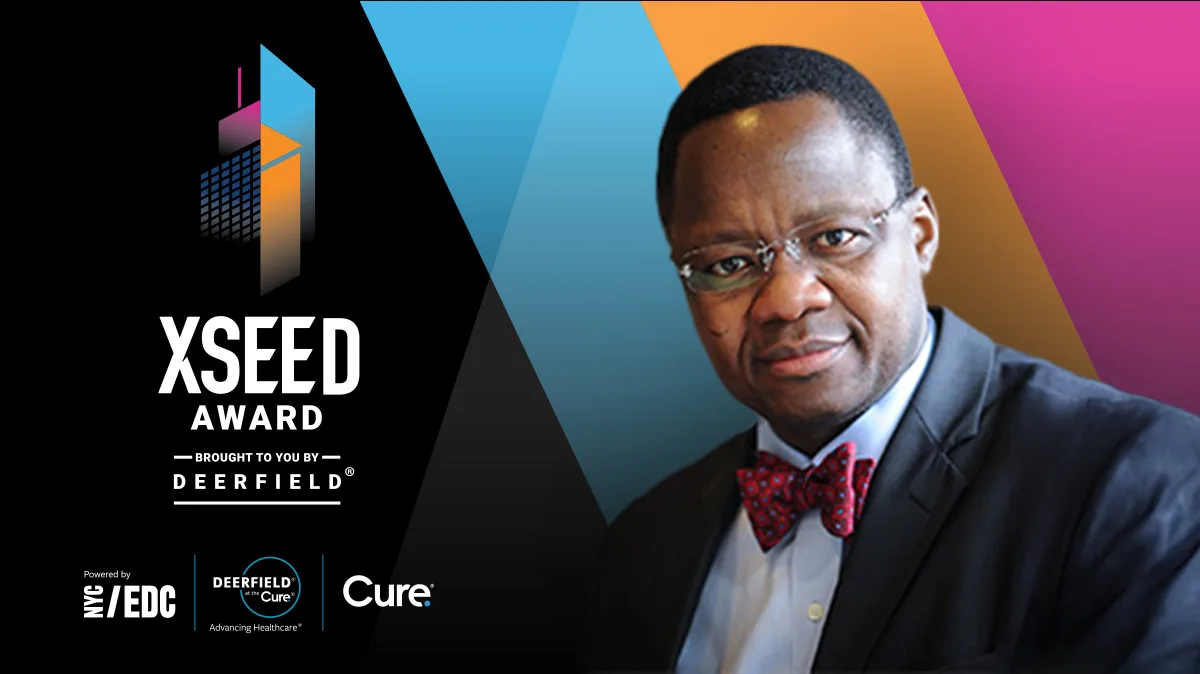
Overview
Vasocure is advancing targeting therapies to prevent arteriovenous graft (AVG) stenosis for patients on kidney dialysis that may also unlock new treatments for atherosclerosis.
Of the more than 800,000 people in the United States with end-stage kidney disease, two-thirds rely on regular dialysis to survive. But for many, the vascular access sites used to deliver treatment — called arteriovenous grafts — frequently narrow or become blocked, requiring procedures every few months to reopen them.
Now scientists at Vasocure LLC are advancing a targeted approach to prevent this condition, called arteriovenous graft (AVG) stenosis. They also plan to extend this strategy to atherosclerosis, the build up of plague within artery walls anywhere in the body that is a global cardiovascular challenge.
The team identified a protein, called the F11 receptor (F11R), that becomes active when dialysis stresses the smooth muscle cells inside a patient’s access vein, prompting the cells to grow into the vein’s innermost wall — the intima — and narrow the vessel.
"I'm very comfortable saying that we're the only company focused on the smooth muscle cell," contended interventional nephrologist Moro Salifu, MD, Chair of the Department of Medicine at SUNY Downstate Medical Center in Brooklyn and a co-founder of Vasocure. "Nobody else is doing anything to suppress the smooth muscle cell as a strategy to treat these problems."
Vasocure designed an intravenous formulation of its novel therapy, an F11R antagonist, that had promising efficacy to block F11R. They are now seeking to design novel oral F11R antagonists (NOFA), which could expand their product to include the $24 billion atherosclerosis market.
In recognition of this early stage treatment, Salifu and his Vasocure colleagues were named as a finalist team for the 2025 XSeed Award, which provides grants of up to $250,000 to New York City minority- and women-led life science and healthcare startups working on novel preclinical drug development projects. Winning teams also join the ecosystem of Cure, a healthcare innovation campus headquartered in New York City.
The Global Toll of Stenosis for Patients on Dialysis
Patients with end-stage kidney disease face one of two interventions to survive: a kidney transplant or lifelong dialysis. To administer dialysis, the physician creates the AVG — a surgically placed passage for blood flow. Veins usually have low pressure and are not naturally suited to high-pressure blood flow. The stress of repeated AVG use causes the vessel to stretch, triggering a harmful response.
"The response of the blood vessel is to feel like something is wrong, and the smooth muscle cells inside the vessel react," explained Salifu.
As these smooth muscle cells grow and multiply, they infiltrate the intima, causing a conditional called neointimal hyperplasia, which narrows the vein and leads to AVG failure.
"The veins are very unforgiving and the problem is so prevalent. We have to keep the vein open for dialysis to happen, so patients need to see their doctors to get it fixed," said Salifu. "We can put in balloons and open the blockages, but after three or four months, it always comes back."
Salifu has done more than 9,000 of these procedures himself. There is no preventive treatment and, unlike the case for atherosclerotic arteries, no medications to prevent AVG stenosis from developing.
From Lab Discovery to Clinical Vision
Salifu’s journey into research began during his nephrology residency at SUNY Downstate, where former Chief of Nephrology Eli Friedman, MD, became a clinical mentor. Salifu had a patient with end-stage kidney disease who could not undergo a kidney biopsy due to a high risk of bleeding. Working with cell biologist Elizabeth Kornecki, PhD, Salifu learned the patient’s platelets were dysfunctional.
The findings inspired Salifu to work with Kornecki, who became his basic science mentor. Their team discovered F11R, leading to more than three decades of work to reveal its mechanism of its action. They showed it allows platelets to adhere tightly to blood vessel walls and helps smooth muscle cells grow and migrate.
Along with scientists Anna Babinska, PhD, and Yigal Ehrlich, PhD, the team cloned F11R in 2000 and developed antagonists by 2008. In 2014, their data on the efficacy of F11R-inhibiting peptides made the cover of the journal Peptide Science. Their invention received a patent in 2017.
With the IP secured, they co-founded Vasocure in 2018 to commercialize their discovery.
"Once the patent had been issued, we knew we had to bring this to market. Patients have to benefit. We knew there was really no point in having this discovery sit in the lab," recalled Salifu.
Although investors showed interest, the COVID-19 pandemic in 2020 slowed progress. Still, Vasocure resumed momentum and expanded its compound library.
How an XSeed Award Would Help
Vasocure's momentum returned and the team identified several novel F11R blockers. In animal models of atherosclerosis, intravenous F11R antagonists reduced arterial atherosclerotic plaques by nearly 60 percent and neointimal thickening by close to 70 percent.
While intravenous preparations would be ideal for people on dialysis, who are already receiving treatment through a vein, oral medications are preferred for broader cardiovascular indications. That feedback, which Vasocure received in response to federal grant applications, helped shape the company’s next steps: developing NOFA compounds and testing in animal models of atherosclerosis.
An XSeed Award would enable Vasocure to synthesize and evaluate three or four oral candidates. Successful completion of those studies would strengthen the company's ability to secure funding from federal sources and follow-on financing from investors.
Working with the Fortrea contract research organization, Vasocure aims over the next few years to conduct studies in people that would enable an Investigational New Drug (IND) submission to the FDA.
Crossing the Bridge from Academia to Entrepreneurship
Salifu encourages academic investigators seeking to take their innovations to market to connect with their university research offices to translate their ideas.
"The journey is often very uncertain, but uncertainty may excite you because you don't know where it's going to land you," he noted. "Engage with your institution's research program. In my case, I was connected to the SUNY Research Foundation support system, which has venture advisors and IP advisors."
As a nephrologist who has had an active clinical practice for many years, Salifu is equally excited to experience the benefits of being an entrepreneur.
"It's very rewarding to contribute to making a difference in patients' lives in the future. I'm familiar with the problem these patients are facing. They are miserable because of their vascular access outcomes and what we are able to do for them," he asserted. "So changing the trajectory of their lives would be a great reward for me personally, clinically and professionally."
Learn more about the XSeed Award and past winners.








